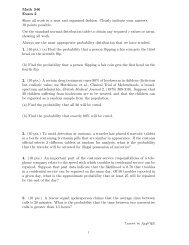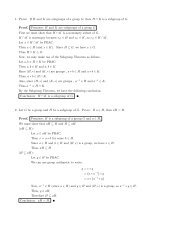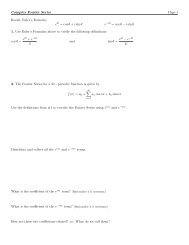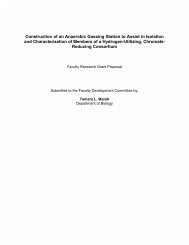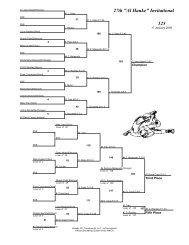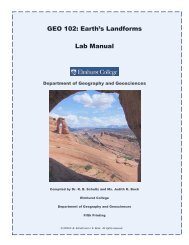Free Executive Summary - Elmhurst College
Free Executive Summary - Elmhurst College
Free Executive Summary - Elmhurst College
You also want an ePaper? Increase the reach of your titles
YUMPU automatically turns print PDFs into web optimized ePapers that Google loves.
Learning to Think Spatially: GIS as a Support System in the K-12 Curriculum<br />
http://www.nap.edu/catalog/11019.html<br />
SPATIAL THINKING IN EVERYDAY LIFE, AT WORK, AND IN SCIENCE 93<br />
the Frankish Alps. While hiking, I mentally developed the progress of my work. . . . Thus, many an<br />
idea which helped me progress . . . gave me the happiness of a discoverer; it was connected in my<br />
memory to some forest path or other, just where I was, where the sun cast its light patches through<br />
the foliage onto the earth. . . . (Christaller, 1972, p. 609)<br />
Christaller’s thinking was grounded in space, it was about space, and it was captured in spatial<br />
diagrams.<br />
3.8.4 Walter Christaller as a Spatial Thinker<br />
To many geographers in the decades between the 1950s and 1970s, Christaller’s work was an<br />
inspiration, a model to be applied literally and to be followed metaphorically. It was one of the<br />
cornerstones of the spatial analysis approach to geography. It was tested in many places, adapted,<br />
and rejected by some. It served as a planning tool in many parts of the world. For later generations<br />
of geographers, it became an emblem.<br />
Whatever one’s judgment of the theory, the discovery itself was an extended exercise that<br />
shows the power and process of spatial thinking:<br />
If I may very briefly once again describe my methodology: first of all play, paint on the maps,<br />
draw in lines and points, but in a very playful fashion—then problems suddenly emerge. Then I<br />
tried, while hiking, to elucidate them, to solve them, while hiking the thoughts are shaken back into<br />
their proper places. And, last of all, comes the completion and formulation. Thereby, the language<br />
should be of a sort that chimes, that is audible, and not just something for reading. In general, the<br />
opinion predominates that creative scholarly work is born at the desk. It must not be so. Mine was<br />
created while hiking, in nature. I, moreover, am glad to consider myself a geographer. (Christaller,<br />
1972, p. 610)<br />
As William Bunge (1966, p. 133) wrote: “With the possible exception of cartography, this<br />
author is of the opinion that the initial and growing beauty of central place theory is geography’s<br />
finest intellectual product and puts Christaller in a place of great honor.”<br />
3.9 CONCLUSION<br />
As the examples in this chapter illustrate, there are different levels of performance in spatial<br />
thinking as a function of age and experience, and there are different modes of performance in<br />
spatial thinking in different contexts. Marie Tharp and Walter Christaller exemplify the power of<br />
spatial thinking in the process of scientific discovery. Some geoscience students never seem to<br />
master the relations between dip and strike in rock formations. An air traffic controller may not be<br />
any more effective at assembling a child’s toy than an artist. A child who has learned to tie a<br />
shoelace may not yet be able to tie a necktie. For some of these activities, years of formal training<br />
are required. For others, learning is informal and unstructured.<br />
There are three messages about the role of spatial thinking in everyday life, at work, and in<br />
science. The first is the pervasiveness, power, and flexibility of the process of spatial thinking:<br />
successful problem solving in many contexts depends to a significant degree upon spatial thinking.<br />
The second is the extent to which there are significant variations in how and how well the process<br />
is executed: there is no single “best” way of thinking spatially. The third is the importance of<br />
meeting the challenge of formal training in spatial thinking: workplace-relevant skills require<br />
considerable investment of individual and societal resources. Although some learning occurs informally,<br />
much depends upon the formal education system. Chapter 4 considers the teaching and<br />
learning of spatial thinking skills: How do people acquire the spatial knowledge, spatial ways of<br />
thinking and acting, and spatial capabilities that are increasingly important in an information<br />
technology-driven society and economy?<br />
Copyright © National Academy of Sciences. All rights reserved.



